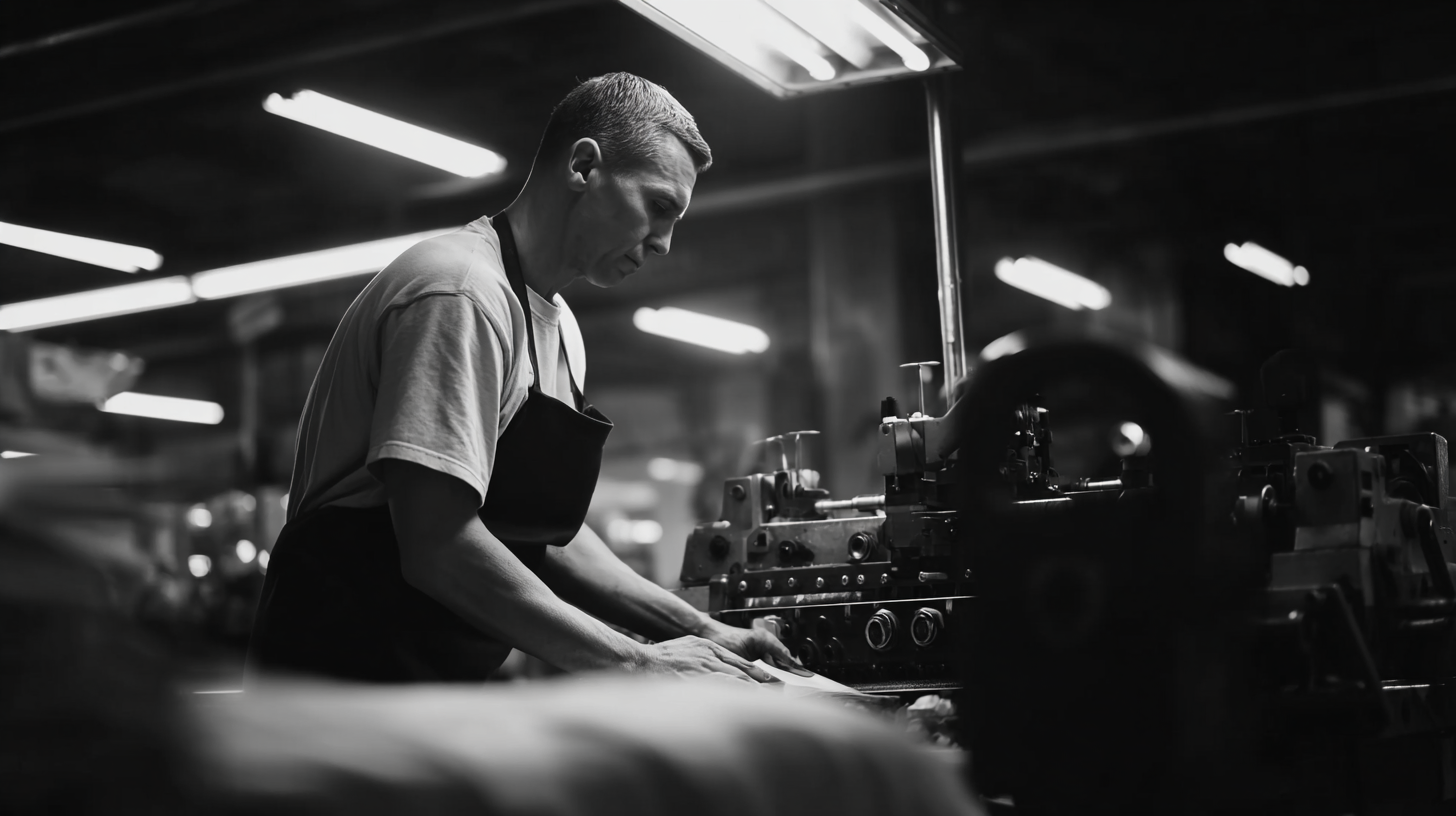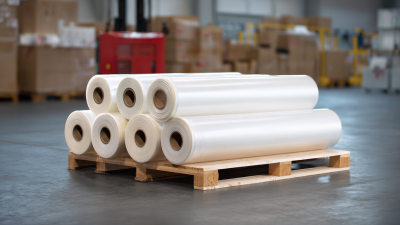In today's competitive packaging landscape, mastering "Shrink And Wrap" techniques is crucial for businesses aiming to enhance product protection and presentation. According to a recent report by Smithers Pira, the global shrink film market is projected to reach $15 billion by 2026, driven by its versatility and efficiency in packaging applications across various industries. Shrink wrapping not only provides superior protection against moisture, dust, and tampering but also offers aesthetic appeal that can attract consumers. With the rise of e-commerce, where first impressions significantly impact purchasing decisions, effective shrink and wrap solutions have become integral to optimizing packaging strategies. This guide will explore various shrink and wrap methods, helping businesses understand how to implement these techniques effectively for their packaging needs.

Shrink and wrap techniques play a crucial role in the packaging industry, providing effective solutions for product protection and presentation. Understanding the fundamentals of these techniques can significantly enhance packaging efficiency and appeal. According to a report by Smithers Pira, the global market for shrink film is expected to reach approximately $11.5 billion by 2023, driven by demand across various sectors, including food and beverages, pharmaceuticals, and consumer goods. This growth underscores the importance of mastering these techniques to meet evolving consumer and industry needs.
 One of the key elements to consider in shrink and wrap techniques is the choice of materials. Polyolefin and PVC sleeves dominate the market due to their versatility and durability. A study by Freedonia Group highlights that polyolefin, due to its superior clarity and strength, is projected to grow at an annual rate of 3.5% through the next five years. When employed correctly, these materials not only enhance product presentation but also ensure better protection against external elements, minimizing product damage during transportation and storage. Investing time to grasp these fundamentals can lead to more effective and aesthetically pleasing packaging solutions.
One of the key elements to consider in shrink and wrap techniques is the choice of materials. Polyolefin and PVC sleeves dominate the market due to their versatility and durability. A study by Freedonia Group highlights that polyolefin, due to its superior clarity and strength, is projected to grow at an annual rate of 3.5% through the next five years. When employed correctly, these materials not only enhance product presentation but also ensure better protection against external elements, minimizing product damage during transportation and storage. Investing time to grasp these fundamentals can lead to more effective and aesthetically pleasing packaging solutions.
 Shrink and wrap techniques have become an essential part of the packaging industry, offering numerous advantages for businesses. One of the top benefits is cost efficiency. According to a report by Smithers Pira, the global market for shrink packaging is expected to reach $56 billion by 2027, driven by demands for efficient and economical packaging solutions. By utilizing shrink films, companies can reduce material usage while ensuring product protection and integrity, leading to significant savings in production costs.
Shrink and wrap techniques have become an essential part of the packaging industry, offering numerous advantages for businesses. One of the top benefits is cost efficiency. According to a report by Smithers Pira, the global market for shrink packaging is expected to reach $56 billion by 2027, driven by demands for efficient and economical packaging solutions. By utilizing shrink films, companies can reduce material usage while ensuring product protection and integrity, leading to significant savings in production costs.
Another notable advantage is improved product visibility and branding. Shrink and wrap packaging allows for full-color graphics and clear viewing of products, enhancing shelf appeal. Research from MarketsandMarkets indicates that the use of high-quality graphics and transparent packaging can increase consumer interest by up to 30%. This visual impact not only attracts customers but also helps in distinguishing products in a crowded marketplace, ultimately boosting sales.
Finally, shrink and wrap techniques provide enhanced protection and durability. These materials are designed to withstand various environmental factors during storage and transportation. According to a study by Freedonia Group, shrink wraps help reduce product damage rates by up to 15%, ensuring that products reach their destination in pristine condition, which is crucial for maintaining customer satisfaction and brand reputation.
When it comes to mastering shrink and wrap techniques, having the right equipment is crucial. The market for shrink-wrap packaging continues to grow, driven by the increasing demand in sectors such as food and beverage, pharmaceuticals, and consumer goods. According to a report by Smithers Pira, the global shrink film market is projected to reach approximately $27 billion by 2027, representing a compound annual growth rate (CAGR) of 4.2% from 2022. This growth underscores the importance of investing in effective shrink and wrap applications to enhance packaging efficiency and safety.
Essential equipment for effective shrink and wrap applications includes shrink tunnel machines, conveyors, and automatic sealers. Shrink tunnel machines are vital for applying heat to shrink films, ensuring a tightly sealed package that protects products during shipping and storage. Moreover, the integration of programmable logic controllers (PLCs) in these machines allows for precision and repeatability, increasing production efficiency. As reported by Technavio, automation in packaging processes is expected to rise dramatically, with an estimated 20% of manufacturing businesses implementing automated packaging solutions by 2025. Selecting the right equipment not only improves operational efficiency but also helps businesses stay competitive in a rapidly evolving market.
When it comes to achieving optimal results with shrink wrap, following best practices is essential. According to a report by Smithers Pira, the global market for shrink wrap packaging is expected to grow by 4.9% annually, indicating a rising demand for effective packaging solutions. To keep pace, businesses must hone their shrink wrap techniques to ensure efficiency and reliability. One crucial aspect to consider is the choice of shrink film. Selecting the right material, whether PVC, PE, or polyolefin, can significantly impact the clarity, strength, and sealing effectiveness of the final packaged product.
Tip: Always conduct a test run of your shrink wrapping process to adjust settings such as temperature and sealing time. This practice ensures that you achieve a tight seal without compromising the quality of the product inside.
Another vital practice is maintaining your shrink wrapping equipment. Regular maintenance can prevent downtime and prolong the lifespan of the machinery. Data from the Packaging Machinery Manufacturers Institute shows that properly maintained equipment can increase operational efficiency by up to 30%.
Tip: Create a maintenance schedule and train staff to be vigilant about any signs of wear or malfunction in your shrink wrap machines. This proactive approach not only enhances productivity but also ensures that your packaging meets industry standards.
| Technique | Material Used | Shrink Temperature (°F) | Application Method | Best For |
|---|---|---|---|---|
| L-Bar Sealing | Polyolefin | 300 - 400 | Heat Sealer | Small to Medium Items |
| Continuous Band Sealing | PVC | 275 - 350 | Automated Sealer | High Volume Production |
| Shrink Tunnel | LDPE | 300 - 400 | Heat Tunnel | Large or Irregular Shapes |
| Manual Shrink Wrapping | Polyethylene | 250 - 350 | Heat Gun | Crafts and Low Volume |
| Pre-formed Shrink Bags | Shrink Film | 300 - 400 | Hand Sealer | Food and Beverage Packaging |
In recent years, shrink and wrap technology has evolved significantly, responding to the dynamic needs of modern packaging. With the global flexible packaging market projected to reach $320 billion by 2027, according to a report by Mordor Intelligence, businesses must adapt to innovative trends that enhance both functionality and sustainability. Key advancements include biodegradable shrink films and smart packaging solutions that can monitor freshness and quality. These technologies not only improve shelf life but also align with consumer preferences for eco-friendly products.
Tip: When exploring shrink wrap options, consider materials that offer both durability and environmental responsibility. Look for suppliers that provide biodegradable or compostable films to meet sustainability goals without compromising product protection.
Moreover, automation in shrink wrapping has streamlined operations, increasing efficiency and reducing labor costs. Industry reports indicate that automated systems can enhance throughput by 30-50%, a significant improvement in high-demand sectors. The integration of IoT into packaging machinery is another exciting trend, allowing for real-time monitoring and data analysis, which ultimately leads to better quality control and reduced waste.
Tip: Invest in IoT-compatible shrink wrapping equipment to not only boost productivity but also to gain insights into your packaging processes, enabling you to make informed decisions for future improvements.






